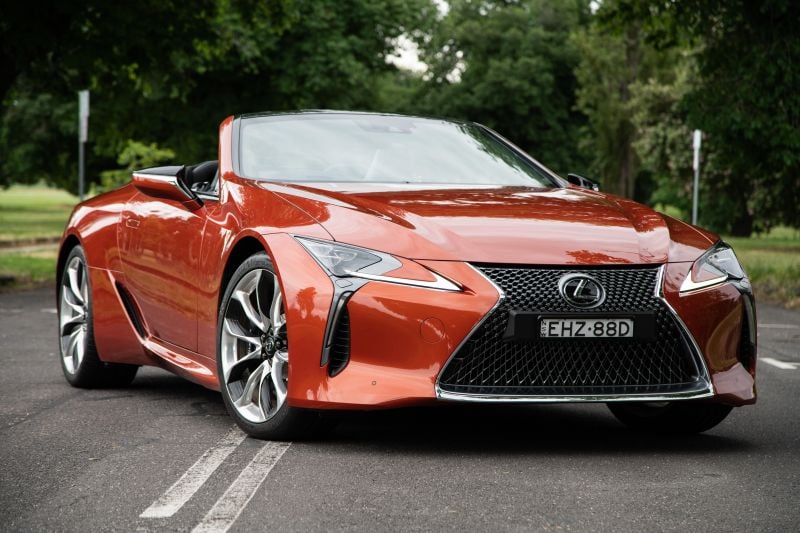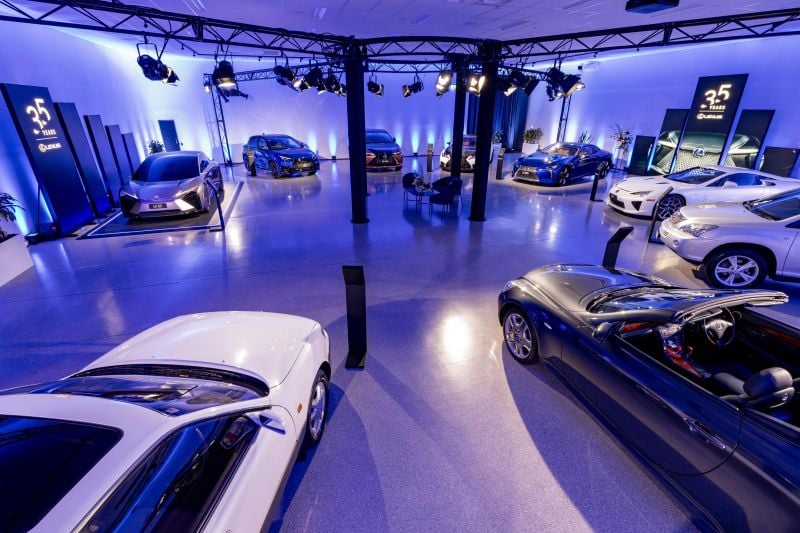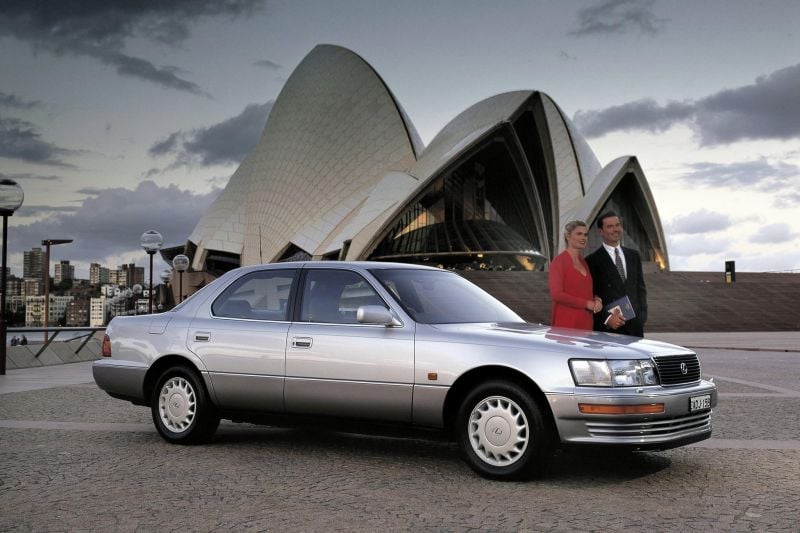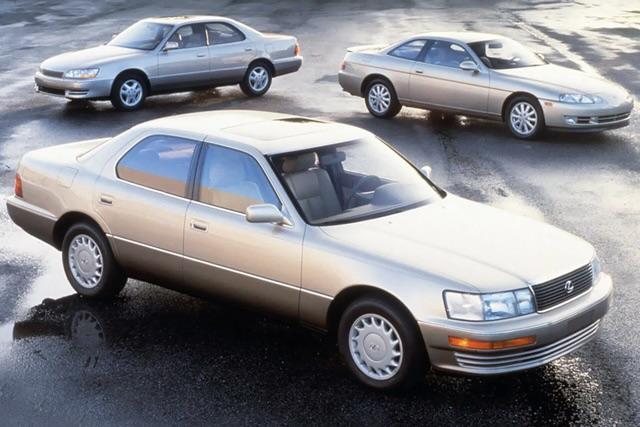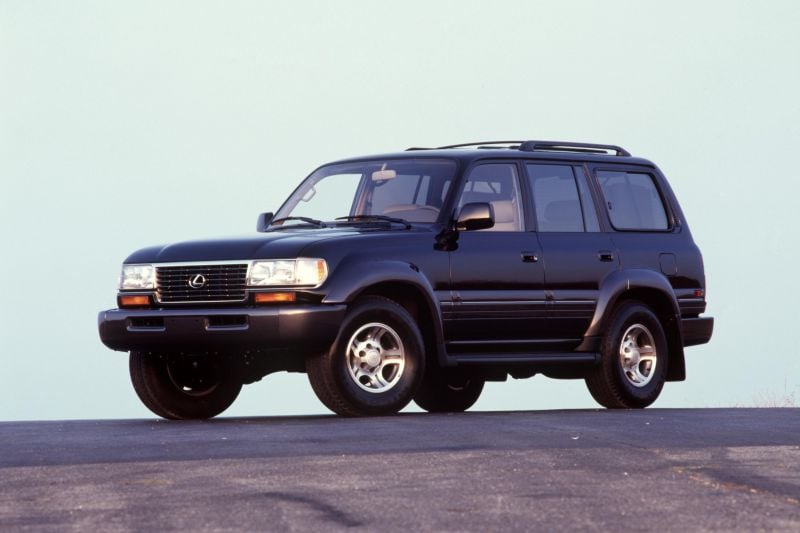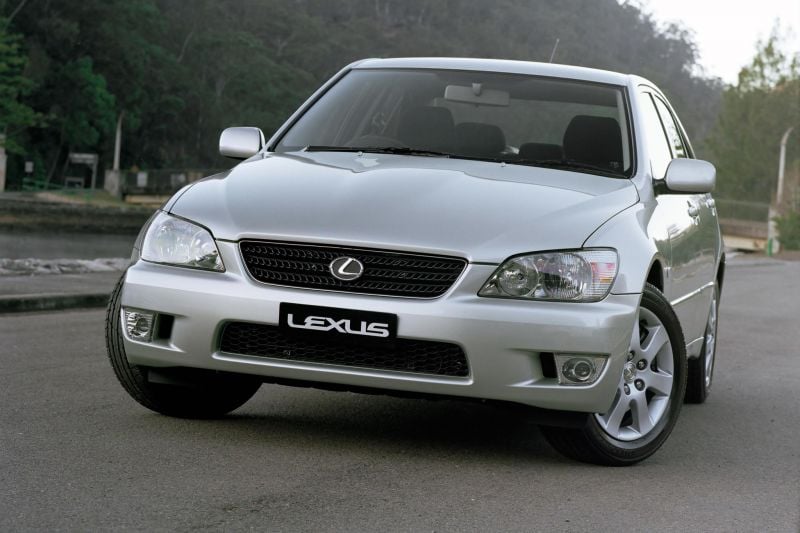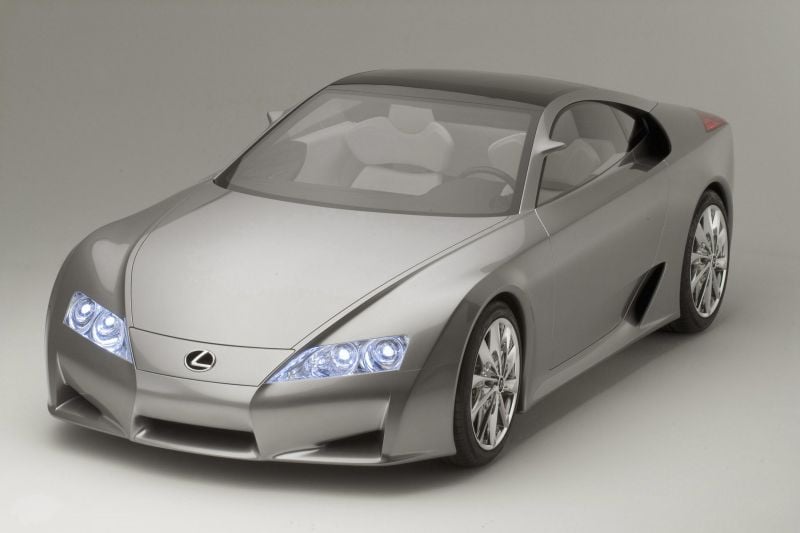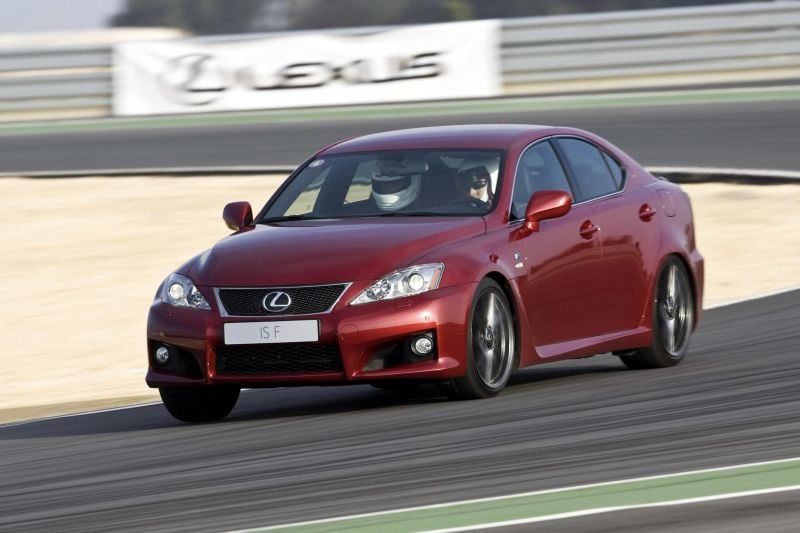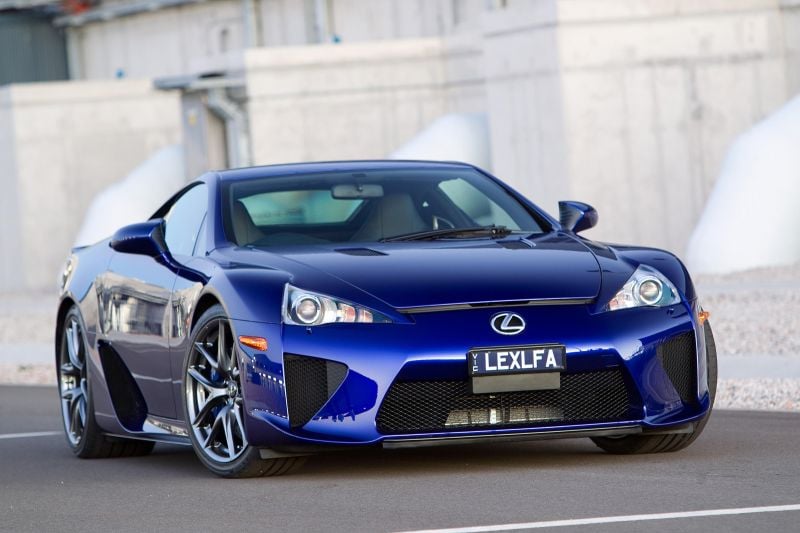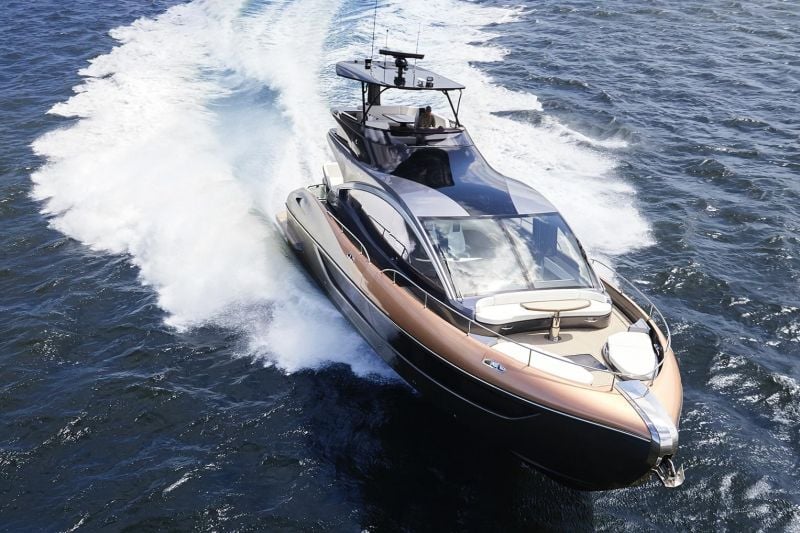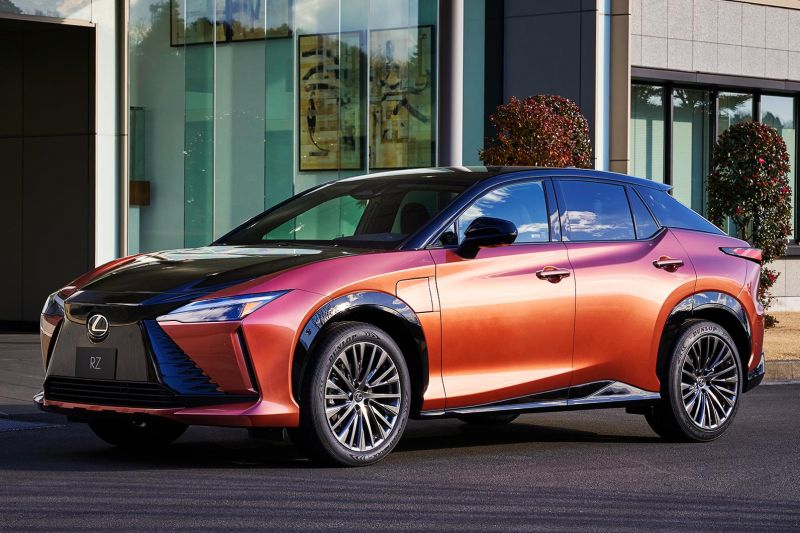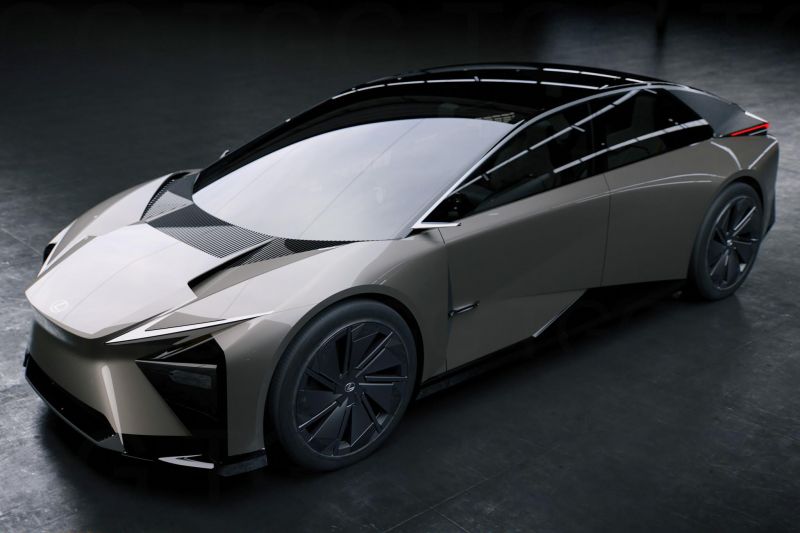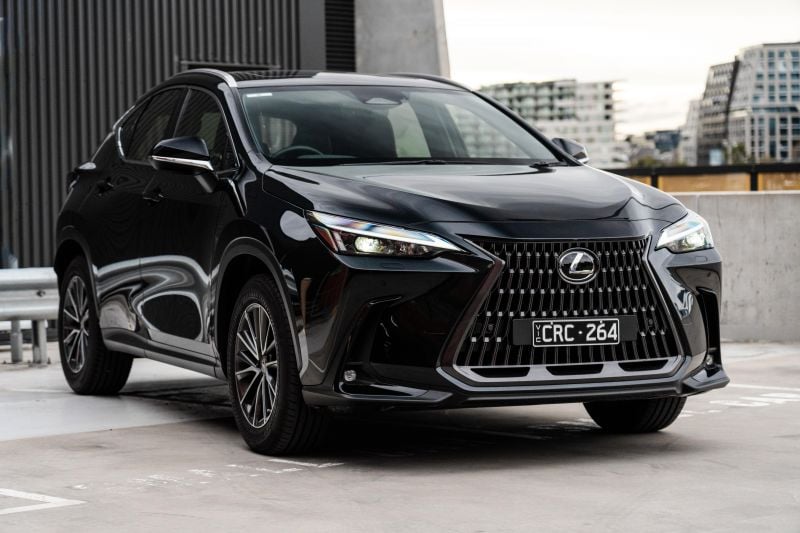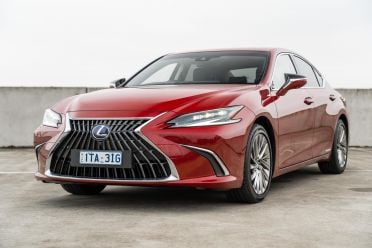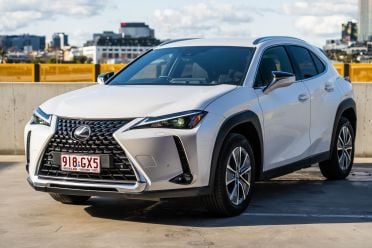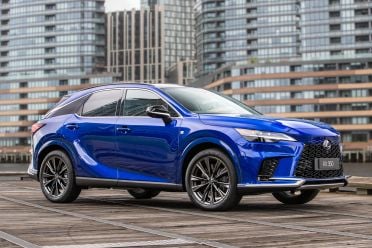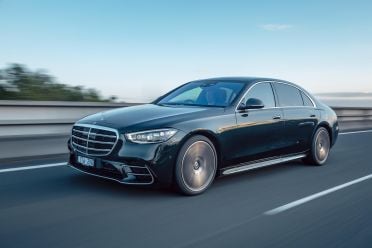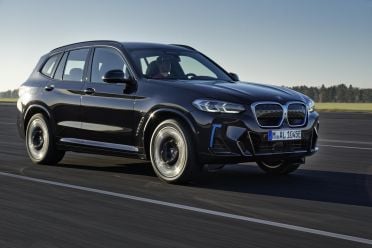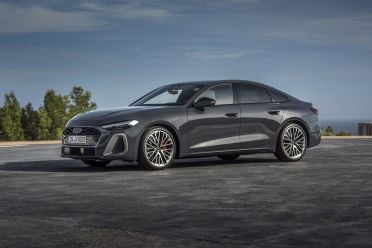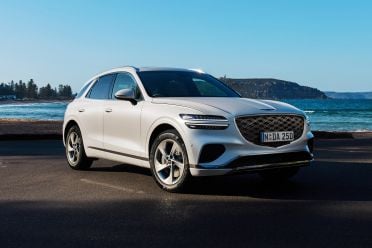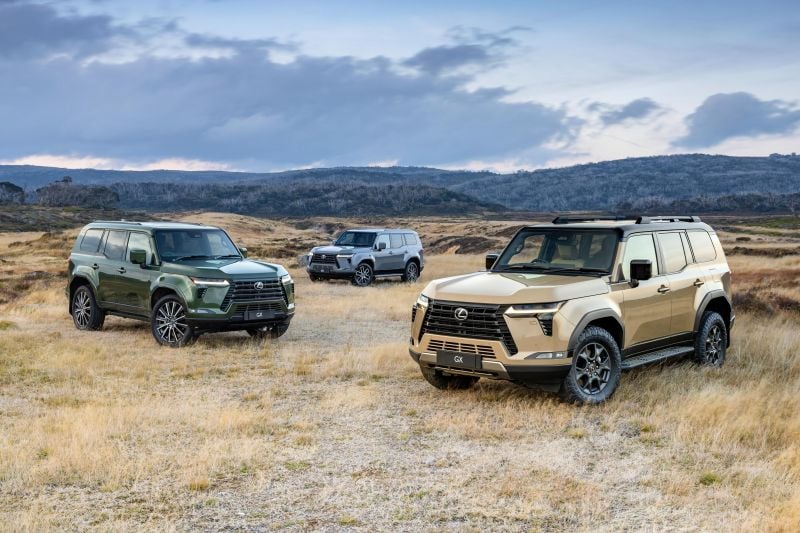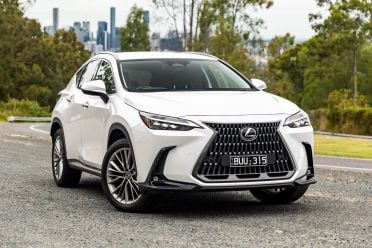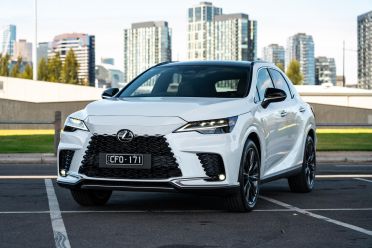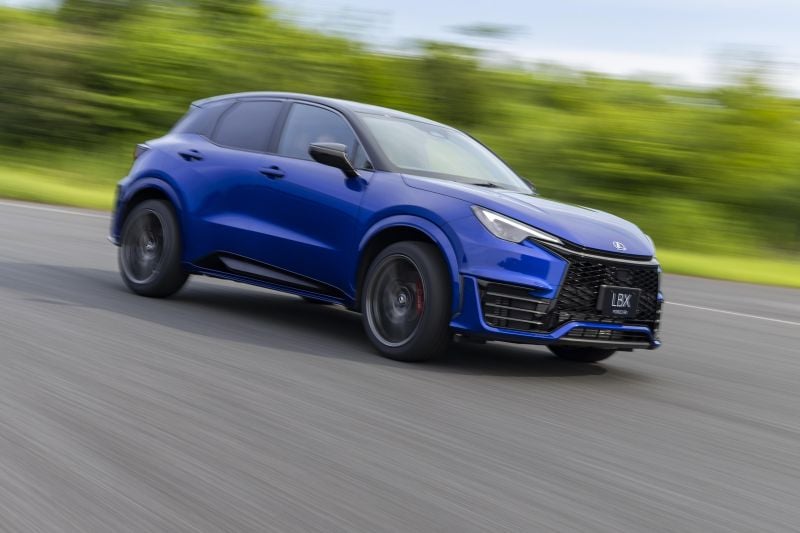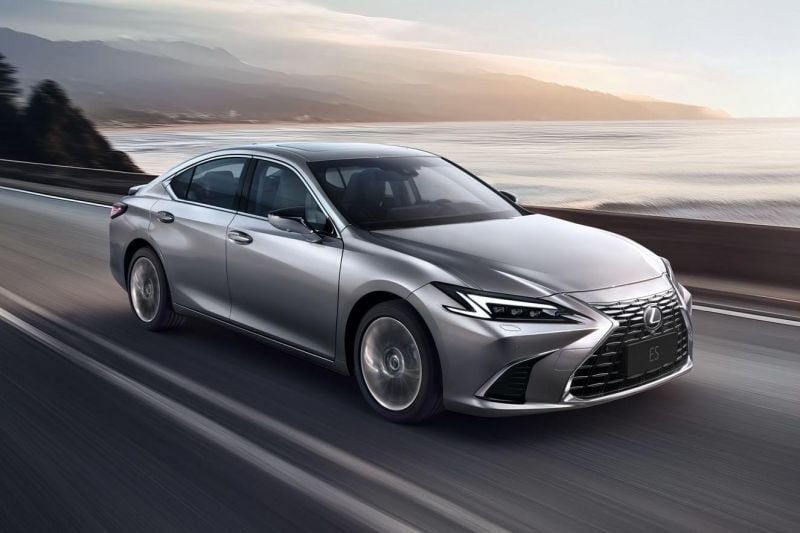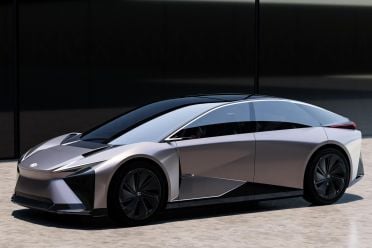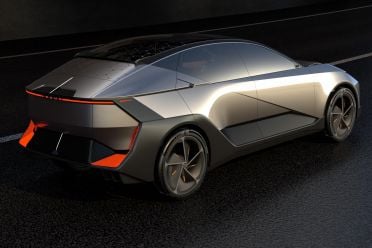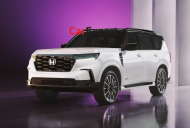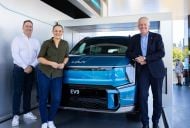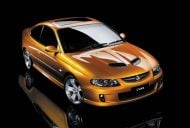Lexus is this year celebrating its 35th anniversary of, as it says, “being a disruptor in the luxury vehicle segment”, and there’s plenty to celebrate from that time.
Its history might be short relative to some of its European contemporaries, but there have been a plethora of influential vehicles that have brought the Japanese brand firmly into the luxury segments.
There have even been some top-shelf performance vehicles that have elevated the brand’s reputation, while displaying what it and its Toyota parent company could be capable of.
Lexus was launched by Toyota at a similar time as other Japanese luxury spinoffs like Acura (Honda) and Infiniti (Nissan), but while those brands have enjoyed success in specific markets like the United States, Lexus has been able to cement itself in a wider range of markets globally.
Locally, Lexus Australia celebrated the occasion by hosting a media-only showcase in Melbourne.
On display were a handful of its most significant cars, as well as a design concept that hints at what the brand could be producing in the near future.
With that in mind, we’ve put together a guide to Lexus that focuses on its movements in Australia. Luckily, it launched in Australia just one year after its first model debuted, which means there aren’t too many differences between Lexus’ history overseas and locally.
As it celebrates its 35th birthday, here’s everything you need to know about Lexus.
Interested in a Lexus? CarExpert’s specialists can help get you in touch with a dealer
MORE: Everything Lexus
What is Lexus?
Lexus is the luxury vehicle division of the Toyota Motor Corporation, and is headquartered in Nagoya, Japan. Though it officially got its start in 1989 with the launch of the LS400 sedan, the story of Lexus actually began as early as 1983.
Then-Toyota Motor Corporation president Eiji Toyoda commissioned the Circle F project in 1983, establishing an intention to build “a car that is better than the best in the world”.
What resulted was the assembling of a team of 60 designers, 1400 engineers and 2300 technicians. Titled the Flagship 1, Lexus put 450 prototype vehicles and 973 prototype 4.0-litre quad-cam V8 engines to the test over more than 4.4 million kilometres before the final product was ready to be revealed.
Flagship 1 came to life in January 1989, when the brand showed off the LS400 for the first time at the North American International Auto Show (NAIAS). At the same time, the Lexus name was established.
The LS400 launched in North America in the same year, and was quickly followed by the ES250 executive sedan a few months later.
Lexus’ Australian adventure started in May 1990, when the LS400 arrived Down Under. More than 250 customers took delivery off the bat, and in the same year it took out Wheels Magazine’s Car of the Year award. It also heralded the beginning of a busy decade for the brand.
The same V8 powertrain used in the LS400 was repurposed in the SC400 coupe, which launched in the USA in 1991. Another variant instead fitted with an inline-six engine – the SC300 – was introduced soon after.
Australia would have to wait until 1992 before receiving a second Lexus model though, when the Toyota Camry-derived ES300 arrived. 580 examples were delivered in its first year on the market Down Under, and Lexus delivered its 1000th Australian vehicle in the same year.
At a similar time the LS400 received a major update, which brought out Lexus’ now-longstanding Takumi craftsmanship philosophy. Takumi is the Japanese name given to master craftspeople who have dedicated their life to their craft.
In 1993 the GS300 sports sedan was rolled out, followed by the all-new second-generation LS400 in 1994. Lexus took from Toyota’s successful LandCruiser to reveal the LX450 in 1995, intended to bring “luxury to the rugged SUV segment” when it entered production in 1996.
In 1997 Australia received the GS300 for the first time, which arrived in its second-generation guise with a 3.0-litre inline-six engine. For the first time, Lexus also sold more than 1000 vehicles in Australia in a single year.
Lexus introduced its first luxury SUV designed and built from the ground up in 1998 – the RX300.
In terms of Australia though, it wouldn’t arrive until its second generation was launched a few years later, which meant the new-generation LX470 of that year was Lexus’ first SUV sold locally.
The last brand-new Lexus to arrive in Australia before the end of the century was the compact IS200 sedan, which went on sale in 1999. It featured a 2.0-litre naturally aspirated engine with a rear-wheel drive setup, and contributed to Lexus hitting the 10,000 local sales milestone.
The third-generation LS went on sale in Australia in November of 2000. Called the LS430, nearly 300 patent applications were filed during its development that eventually brought new suspension, steering, brakes, and a larger 4.3-litre V8 engine.
Also launched was the second-generation SC430, offered in both coupe and convertible body styles. It arrived in Australia in 2001, marking the sixth model in Lexus showrooms.
The large GX470 SUV appeared in the USA in 2002, but in 2003 Lexus gave its first look at potential future hybrid power in the form of the LF-S at the Tokyo Motor Show. Under the bonnet was a hybrid V8, which previewed a future production powertrain.
In that same year the RX330 went on sale in Australia, and Lexus delivered its 20,000th local vehicle. A prototype of the RX400h hybrid SUV was shown at the 2004 NAIAS, which was based on the RX330.
In 2005 though, the first LF-A concept headlined at the NAIAS. Intentions were to leverage Toyota’s Formula 1 technology, which would provide a naturally aspirated V10 engine with more than 370kW of power, but a displacement of less than 5.0 litres.
The world would have to wait for more on that vehicle, but in the same year the IS250 superseded the IS200 in Australia.
In 2006 Lexus brought the LF-S concept into its production form with the LS600hL, powered by a 327kW 5.0-litre hybrid V8 with all-wheel drive – the brand’s most powerful hybrid engine to date. In the same year, Lexus brought its first hybrids to Australia in the form of the GS450h and RX400h.
The ‘F’ name for Lexus’ performance cars appeared the year after; the name and logo inspired by Japan’s Fuji Speedway where its cars were tested and developed.
Lexus’ first car wearing the badge was the IS F sedan, which boasted a 5.0-litre V8 with 311kW and 505Nm and a spate of handling and suspension enhancements over the standard model. Later in 2007, Lexus delivered its 1000th hybrid vehicle in Australia, followed by its 50,000th vehicle overall in 2008.
The third-generation RX – including the RX450h hybrid – arrived the year after, at a similar time to Lexus confirming production of the LFA supercar. Its 412kW/480Nm 4.8-litre V10 engine was co-developed with Yamaha, and while production was limited to 500 units globally, only eight were allocated to Australia.
In 2010 Lexus celebrated 20 years in Australia, and the CT200h hybrid compact hatch was shown off overseas for the first time. It arrived in Australia the following year as the most affordable Lexus ever, while the brand showed off its new spindle grille design with a concept of the fourth-generation GS sedan at the NAIAS.
In 2011 Lexus was impacted by the Tōhoku earthquake and tsunami, which disrupted Japanese production and hindered short-term sales targets. Organisational changes by then-Toyota chairman Akio Toyoda also meant Lexus executives began reporting directly to their parent company’s chairman for the first time ever.
Lexus’ new design language would appear again in 2012 with the LF-LC concept, which previewed the LC coupe. The LF-CC concept shown later in the year at the Paris Motor Show also pointed to the rear-wheel drive RC and RC F sports coupes, and Lexus hit the 75,000 sales milestone in Australia.
In 2013 the next-generation IS arrived with a hybrid powertrain in local showrooms, while the ES returned for the first time in seven years with its own ES300h hybrid variant. In that year, Lexus Australia reached 10,000 hybrid vehicle deliveries.
The RC F coupe became Lexus’ new halo performance car in 2014, and the NX SUV debuted in Australia the same year. The brand’s first hydrogen fuel-cell electric vehicle appeared in concept form in 2015, dubbed the LF-FC concept.
Lexus began exploring other tech like a conceptual “Hoverboard of the Future” at the same time, and also achieved the 100,000 deliveries milestone in Australia.
The LC500 entered production in 2016, featuring Lexus’ first 10-speed auto and followed by the LC500h hybrid two months later.
More non-car related endeavours began in 2017 when Lexus revealed its Sport Yacht concept (previewing the 2019 LY650), while in Australia the brand’s 20,000th hybrid vehicle was delivered – its most popular hybrid models locally were the RX (7000 units) and the CT200h (6500 units).
In 2019 the UX range arrived in Australia, and in 2020 Lexus’ local arm celebrated its 30th anniversary. At the same time, the brand achieved 30,000 local hybrid sales.
Lexus’ first battery-electric vehicle (BEV) – the UX300e – arrived in 2021, coinciding with the expansion of the brand’s Encore ownership program that first appeared in 1990. In that year, one-third of all Lexus deliveries in Australia were hybrid vehicles for the first time.
In that year, it was also reported Lexus would switch to an electric-only lineup by 2035. That followed previous 2009 reports that it planned to become hybrid-only in Europe.
The brand’s first plug-in hybrid electric vehicle (PHEV) arrived in the form of the NX450h+ in 2022, alongside the debut of the fifth-generation RX.
An RX500h F Sport Performance joined the lineup, featuring Lexus’ first turbo-hybrid powertrain. 46.3 per cent of Lexus’ sales in Australia were recorded as either hybrid, PHEV, or BEV for the first time in that year.
2023 saw the arrival of the RZ450e SUV, which while being the second Lexus EV was the first on the dedicated e-TNGA electric platform later used on the Toyota bZ4X and Subaru Solterra. The LM people mover also appeared in 2023, as well as the LF-ZC and LF-ZL concepts at the Tokyo Motor Show – intended to show Lexus’ vision of future EVs.
In Australia, Lexus also managed to deliver more than 10,000 vehicles (15,192) in a single year for the first time ever.
2024 marks the 35th anniversary of the Lexus brand, and the all-new LBX arrived in Australia for the first time. It featured a handful of Lexus-first equipment like a 1.5-litre three-cylinder hybrid engine, with its small SUV stature intended to appeal to a younger demographic.
It was followed by the latest GX SUV – which arrived in local showrooms before Toyota’s related 250 Series-generation Prado – built in right-hand drive for the first time, headlined by the rugged Overtrail grade.
Lexus also delivered its 50,000th electrified vehicle in Australia this year, with such powertrains accounting for more than 70 per cent of the brand’s Australian sales so far this year.
The brand says it’s still committed to its target of selling only electrified vehicles in Australia by 2030.
Interested in a Lexus? CarExpert’s specialists can help get you in touch with a dealer
MORE: Everything Lexus
What can you currently buy from Lexus?
Lexus currently sells 11 distinct models in Australia, with its lineup dominated by SUVs.
| Model | VFACTS segment | Price range | Sales (Jan-Nov 2024) |
|---|---|---|---|
| Lexus ES | Medium | $62,140 – $80,170 | 962 |
| Lexus LS | Medium | $195,279 – $201,305 | 11 |
| Lexus LBX | Small SUV | $47,550 – $56,990 | 1355 |
| Lexus UX | Small SUV | $55,370 – $88,190 | 779 |
| Lexus NX | Medium SUV | $63,400 – $83,900 | 5619 |
| Lexus RX | Large SUV | $90,060 – $127,434 | 1871 |
| Lexus RZ | Large SUV | $121,059 – $133,059 | 200 |
| Lexus GX | Upper Large SUV | $116,000 – $128,200 | 753 |
| Lexus LX | Upper Large SUV | $155,976 – $217,976 | 504 |
| Lexus LM | People Mover | $160,272 – $220,272 | 265 |
| Lexus LC | Sports | $203,550 – $217,157 | 50 |
Note: All prices are before on-road costs. You can click the model names in the table above to be taken to their dedicated CarExpert showrooms.
Given the breadth of Lexus’ range in Australia, the below information is intended to give a top-line overview of what each model is about. For further information, we’ll link to each model’s name to its dedicated price and specs article.
Lexus’ only two sedans still sold in Australia are the ES and LS, with the LS being the larger of the two. The Camry-based ES uses a 2.5-litre naturally aspirated four-cylinder engine – with hybrid models adding an electric motor – and is front-wheel drive only.
The LS meanwhile utilises a 3.5-litre twin-turbo V6, with hybrids using a naturally aspirated version mated with an electric motor. They’re rear-wheel drive only and considerably more expensive than the ES.
The third and final passenger vehicle in Lexus’ Australian lineup is the LC coupe, which is powered by either a 5.0-litre naturally aspirated V8 or a 3.5-litre V6 petrol-hybrid engine. Drive is sent to the rear-wheels only through either a 10-speed auto or hybrid transmission respectively.
Lexus’ most expensive vehicle is currently the LM people mover, which is hybrid-only but with a selection of two different powertrains depending on the variant. It started life as a rebadged Toyota Alphard/Vellfire, but has since become more disconnected.
The remainder of Lexus’ model range is entirely SUVs. The smallest of the lot are the LBX and UX, though the two are fairly different. Smaller of the pair is the LBX, which is based on the Toyota Yaris Cross and powered exclusively by a 1.5-litre three-cylinder hybrid – though a hotted-up Morizo RR version (similar to the GR Yaris) is coming next year.
The UX, meanwhile, is similar to the Toyota C-HR and comes in petrol-only, hybrid, or fully electric guises depending on variant – the latter of which only appeared in Australian showrooms last year. There are also a greater number of variants compared to the LBX.
Moving up in size brings the RAV4-related NX SUV, which again offers petrol-only, hybrid, and PHEV drivetrains. The NX450h+ PHEV has been hit with supply issues that have meant it hasn’t been available to order in Australia for some time as the brand gets through order backlog.
Then there’s the RX SUV, which is either petrol-only or hybrid. It shares a platform with the NX and ES, as well as Toyota’s Kluger, RAV4, and Camry. In contrast, the RZ is electric-only and built on a dedicated EV platform shared with the Toyota bZ4X and Subaru Solterra, as noted earlier.
Finally are Lexus’ two largest SUVs. The first is the GX, which shares a platform with the Toyota Prado. Unlike the Prado, there’s no electrification (even mild) for the GX in Australia, which is instead powered solely by a 3.4-litre twin-turbo V6 petrol engine across the range.
The LX is instead based on the Toyota LandCruiser 300 Series. It commands an expectedly hefty price tag, and is available with either a 3.3-litre V6 twin-turbo diesel or a 3.4-litre V6 twin-turbo petrol.
Interested in a Lexus? CarExpert’s specialists can help get you in touch with a dealer
MORE: Everything Lexus
Which brands does Lexus compete against?
Being a luxury brand, Lexus primarily competes with European brands like Mercedes-Benz, BMW, and Audi in Australia.
Not all are direct comparisons, but closest against Mercedes-Benz’s E-Class sedan is the Lexus ES, and against the more luxurious S-Class is the LS.
In terms of SUVs, the most comparable models are the Mercedes-Benz GLA-Class and Lexus UX, as well as GLC-Class and Lexus NX. Both have high-end sports cars too, which means Lexus’ LC can be compared to Mercedes’ SL-Class.
There are a fair few comparisons against BMW too. The ES competes with the 3 Series on price but the 5 Series on size, while the flagship Lexus LS sedan goes up against the BMW 7 Series.
You can compare the smaller Lexus UX to the BMW X1, the NX to the X3, the RX to the X5, and the GX to the X7. There are EV SUVs to compare too, namely the Lexus RZ against the BMW iX3.
The final German manufacturer to compare against is Audi, and its upcoming A5 Sedan rivals the Lexus ES. The most direct competitor to Lexus’ LBX small SUV is the Q2, while the rest of the two brands’ comparable SUVs can be broken down as UX vs Q3, NX vs Q5, and RX vs Q8.
In similar sense to BMW, Lexus’ RZ EV competes with the Audi Q6 e-tron. There are some less mainstream brands Lexus has as competitors too, namely Genesis, which rivals the LS with its G80, the NX with its GV70, and the RX with its GV80.
There’s also a comparison to be made between some Land Rover models. The off-road leaning Lexus GX rivals the Land Rover Defender, while the LX large SUV can be compared against the Range Rover.
Interested in a Lexus? CarExpert’s specialists can help get you in touch with a dealer
MORE: Everything Lexus
How popular is Lexus in Australia?
To the end of November 2024, Lexus Australia has delivered 12,369 vehicles this year.
It’s a decent figure, but it’s 12 per cent down on its sales from this time last year. Compared to the rivals listed above, Lexus is behind Mercedes-Benz (18,303, down 17.8 per cent), BMW (23,876, down 1.3 per cent), and Audi (13,782, down 21.6 per cent).
It remains ahead of Genesis on 1287 so far this year, a figure that’s 28.6 per cent lower than the same time last year. Lexus is also outselling Land Rover, which currently sits on 7352 sales for 2024 – though even that is down 5.5 per cent.
The Japanese brand’s best-selling model continues to be the NX, of which 5619 units have been sold to the end of November this year. Next highest is the RX on 1871, followed by the LBX on 1355.
Its lowest-selling car is currently the expensive LS sedan with 11 units. The RZ EV is next-lowest on 200, with the LM and LX next up at 265 and 504 respectively.
All of Lexus’ models have experienced a decline in sales over the course of 2024 compared to 2023, with the UX experiencing the harshest decline of 65.3 per cent. The LX, LS, and ES are all also down by more than 40 per cent on this time last year.
In contrast, annual Toyota sales are currently up 13.6 per cent on this time last year, though as Lexus’ broader-reaching parent company it does field a larger number of more approachable mass-market vehicles.
Interested in a Lexus? CarExpert’s specialists can help get you in touch with a dealer
MORE: Everything Lexus
What’s next for Lexus?
Lexus doesn’t have a large number of vehicles planned for Australia in the coming years, as the brand focuses on its more long-term goals that reach into the 2030s.
Coming in the first half of 2025 is the hotted-up LBX Morizo RR, which is set to gain the high-performance 1.6-litre three-cylinder turbo powertrain from Toyota’s GR Yaris.
With a rally-inspired all-wheel drive setup it’ll be a drastic departure from the standard LBX currently on sale, with a 0-100km/h time of just over 5.0 seconds.
An eight-speed automatic transmission will be standard when it arrives in local showrooms. While it’ll also be available with a six-speed manual in Japan, you won’t be able to buy one in Australia.
Beyond that, Lexus has outlined a series of goals for the coming years, and potential new models that could possibly make their way to Australia have been seen overseas.
The first of which is the facelifted ES sedan, which was revealed in China last month. There has been no word on when or if the updated model will come to Australia at the time of publishing, though Lexus did secure a handful of trademarks that hint at potential electric ES sedans earlier this year.
There have also been rumours surrounding a new supercar from the luxury Japanese brand, which will reportedly wear the LFR name and be a spiritual successor to the LFA.
Already spied testing on public roads in Europe, the LFR is expected to be based on a Toyota racecar called the GR GT3. If it’s real, it’s possible the LFR could be revealed sometime next year ahead of a 2026 market debut.
Lexus has also been giving though to its electrified future too, previewed by a pair of concept EVs that broke cover in Japan last year.
It has previously been announced that Toyota aims to launch 10 new EVs by 2026, with Lexus intending to sell only hybrid, PHEV, and EVs in Australia by 2030.
A spate of trademarks have also been filed by Lexus in relation to potential future electric models, the first of which were expected to be revealed in 2026 but have been delayed to 2027.
Previous reports have also outlined ambitious goals for Lexus, which suggest it wants to become an electric-only marque globally by 2035. Interestingly, that would mean it’d make the jump before Toyota.
That being said, Lexus hasn’t outlined a clear timeline for exactly when it’ll follow Toyota in ditching petrol versions of cars that have hybrid alternatives, but it does still intend to do so before the end of the decade.
Interested in a Lexus? CarExpert’s specialists can help get you in touch with a dealer
MORE: Everything Lexus

